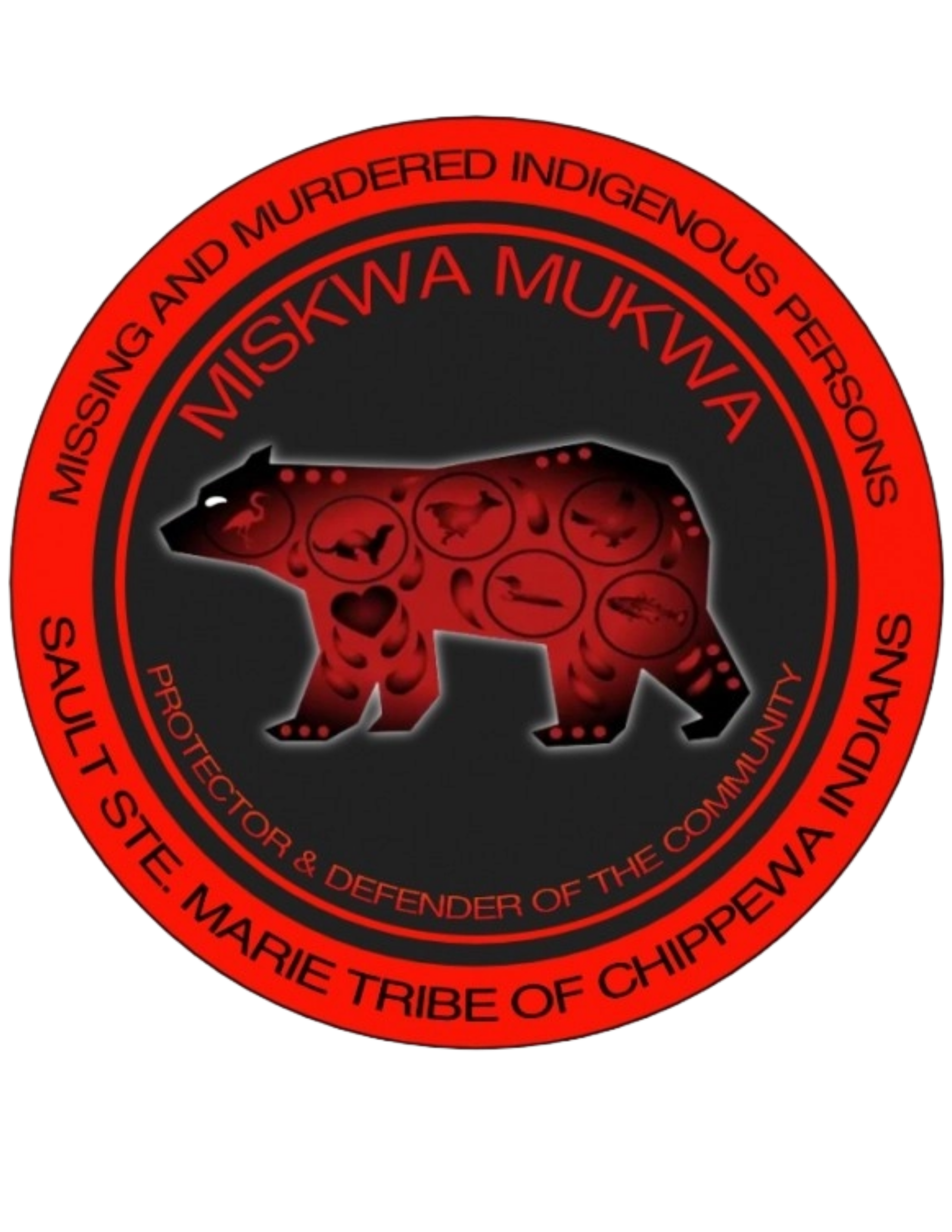May is Missing and Murdered Indigenous Relatives Awareness Month
In the United States, Native American women are two and a half times more susceptible to experiencing violence in their lifetime than any other demographic. The Bureau of Indian Affairs reported that the Centers for Disease Control and Prevention (CDC) National Intimate Partner and Sexual Violence Survey, American Indian and Alaska Native (AI/AN) females experienced the second highest rate of homicide in 2020. Notably, in 2020, homicide was among the top ten leading causes of death for AI/AN females aged 1-45.
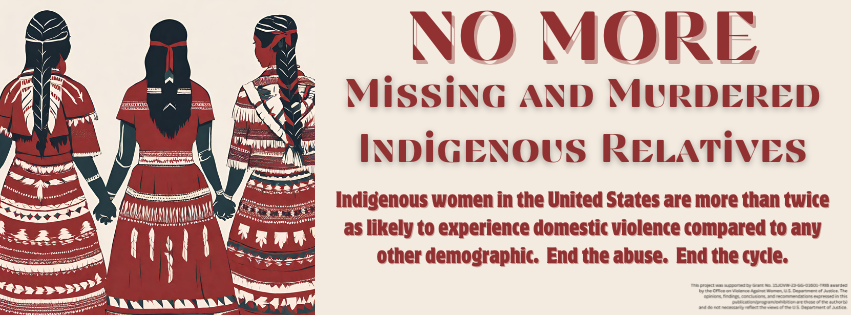
The last known count of missing and murdered women was 5,712 in 2016 by the US Department of Justice’s federal missing persons database, according to the National Crime Information Center. However, the Bureau of Indian Affairs states the National Information Clearinghouse and Resource Center for missing, unidentified, and unclaimed person cases across the United States, called the National Missing and Unidentified Persons System (NamUs), only logged 116 of those cases. The issue remains consistent in the United States and Canada; the data is incomplete, which creates a barrier and continues our invisibility. The United States government cannot provide a valid reason why they have been unable to protect and accurately report these missing women. Their reasons have included:
- Jurisdictional issues between state and tribal land.
- A lack of communication between tribes and government officials.
- A lack of community awareness and support.
- Insufficient services such as amber alerts and media coverage.
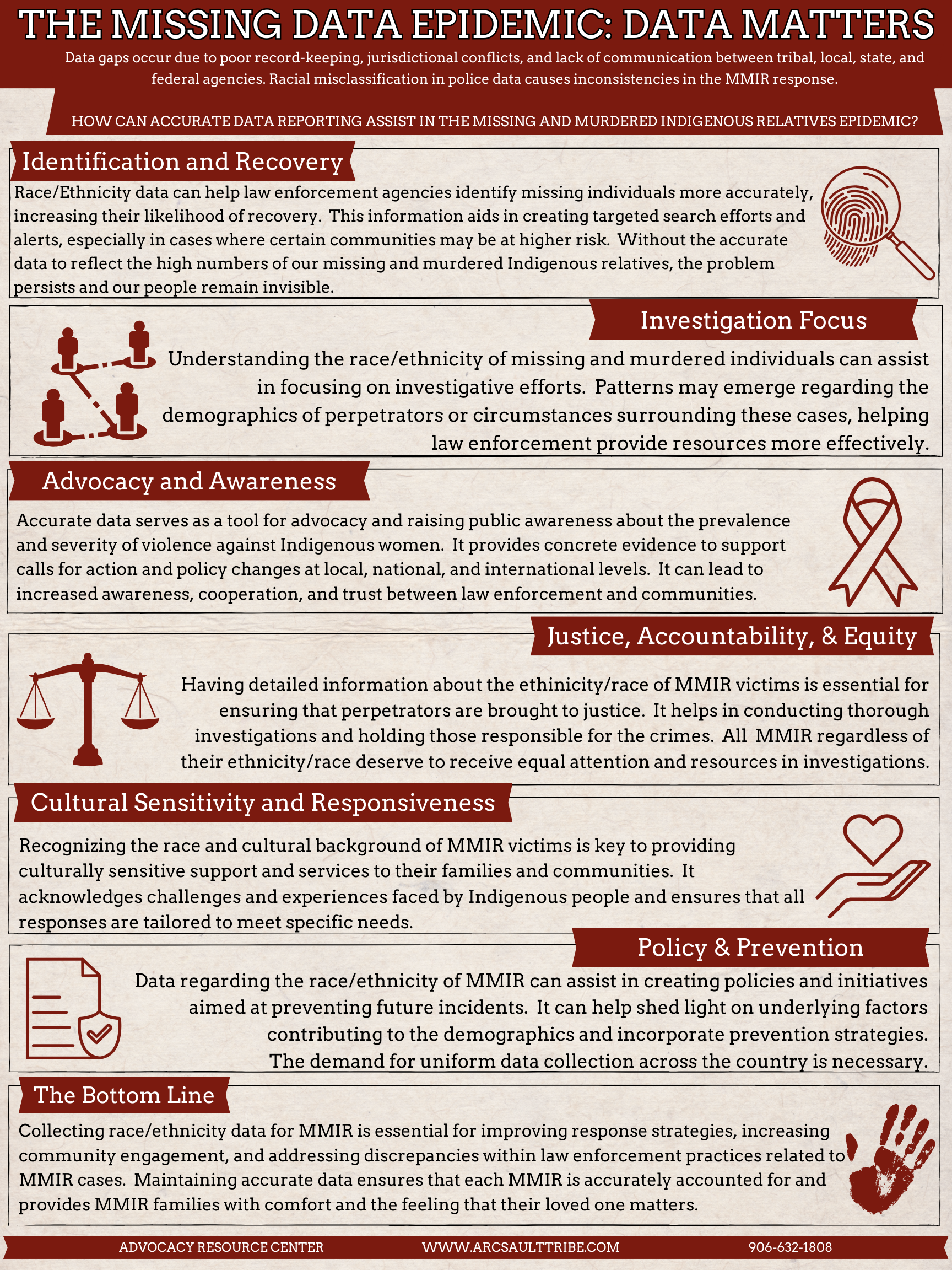
Numerous contributing factors to the MMIR epidemic include but are not limited to racism, sexism, and objectification of Indigenous women and children. The historical and intergenerational traumas, lack of legal protection, colonization, and genocide contribute to the susceptibility of Indigenous people. Human trafficking plays a significant role in the MMIR concern. Traffickers prey upon those troubled by poverty, depression, homelessness, substance abuse, and a lack of familial support. These, among many other factors, are a collection of injustices, systemic failures, and unnecessary traumas placed upon our Indigenous people for many centuries, which contributes to our Missing and Murdered epidemic.
In November 2019, President Donald Trump formed Operation Lady Justice (OLJ) to enhance the criminal justice system and address the concerns of indigenous communities regarding missing and murdered people. Savanna's Act was passed in 2020 and is designed to assist authorities in responding more efficiently to cases of missing and murdered. The belief is that law enforcement coordinated responses, data collection, and information sharing will improve the response to missing and murdered indigenous people.
Learn more about Savanna's Act at the link below:

Various initiatives have since been introduced to address the issue, such as designated task forces, increased funding for support services for MMIR families, and culturally sensitive protocols for law enforcement.
The MMIR, originally the MMIW(W=Women) movement, is finally receiving increased global attention, with advocacy groups, governments, and organizations working to raise awareness to address the crisis. Television shows, documentaries, movies, and mainstream media have also contributed to the newfound awareness of MMIR. For example, NBC’s ten-episode series, “Alaska Daily,” Sundance Film Festival’s Murder in “Big Horn,” and others such as “Highway of Tears,” “Finding Dawn,” “Say Her Name,” and “Somebody’s Daughter” have drawn much attention to viewers who may have never know of the issue.
Please honor our missing and murdered Indigenous people by wearing red throughout May. Wearing red is a way to remember and respect our missing and murdered loved ones. In some tribes, red is known to be the only color that spirits can see. By wearing red, the voices of the missing and murdered are represented and remembered. The original creator of the Red Dress campaign, Jaime Black, of the Metis Aboriginal Group from Canada, stated that red is the lifeblood and connection to all of us.
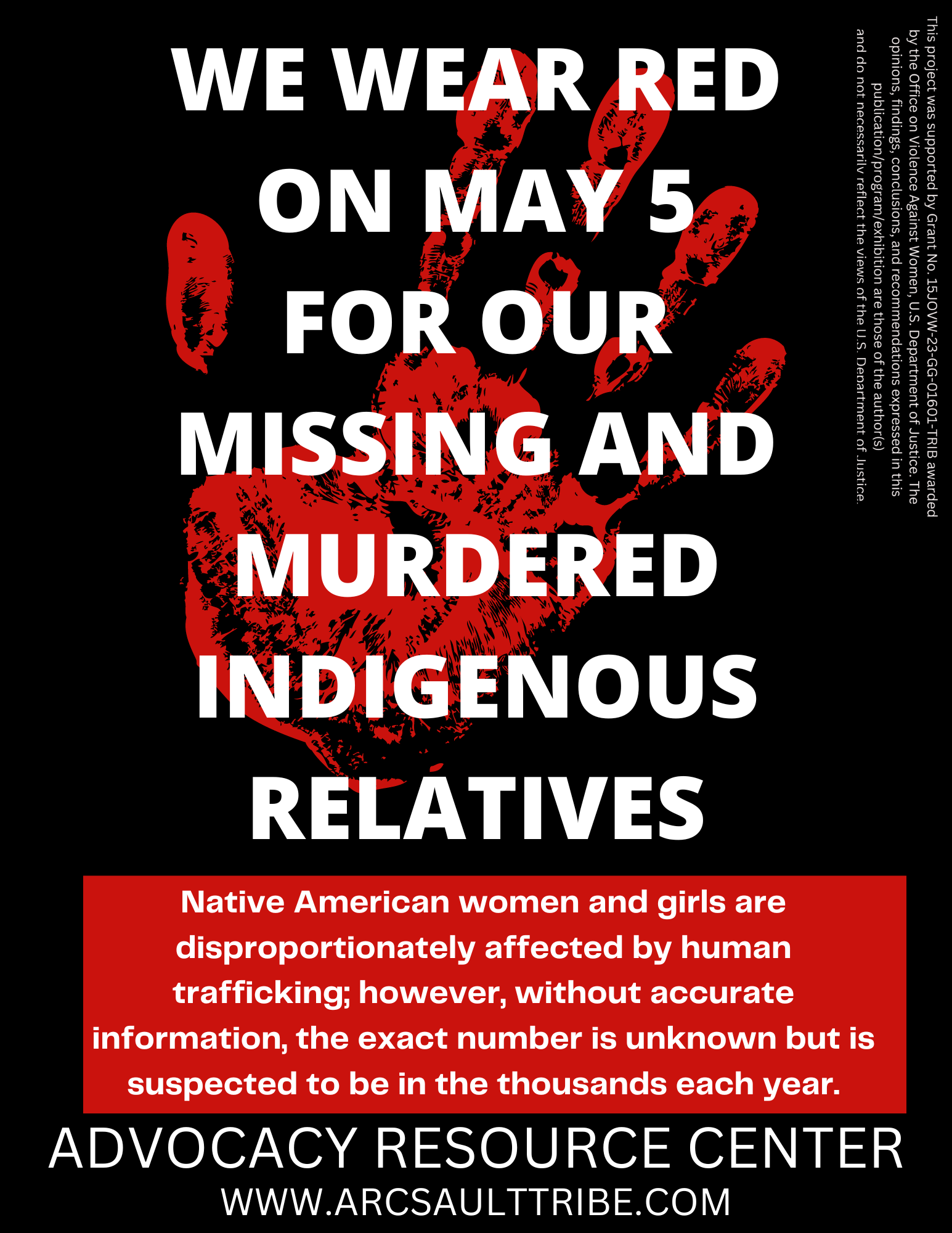
The Advocacy Resource Center (ARC) hosted the Red Dress Campaign along Shunk Road during the month of May. This year, ARC added Red Dress displays to each Tribal Housing location in our seven-county service area. The Red Dress Campaign is a public display of red dresses and shirts hung to commemorate all missing and murdered Indigenous relatives and honor their memory.

St. Ignace Library Red Dress display created by the Advocacy Resource Center
The ARC is currently seeking information to add to the MMIR database to track the numbers of our missing and murdered Sault Tribe relatives. Relatives or friends with information about a missing or murdered Sault Tribe member are encouraged to contact Jess Gillotte-King, Community Educator, at 906-632-1808 with their information. The information provided does not have to be current; all relatives are significant, and every relative matters. The ARC wants to maintain an accurate count of our tribal members who have been taken from us. The ARC has also created a Missing Persons Toolkit to assist families if a loved one goes missing.

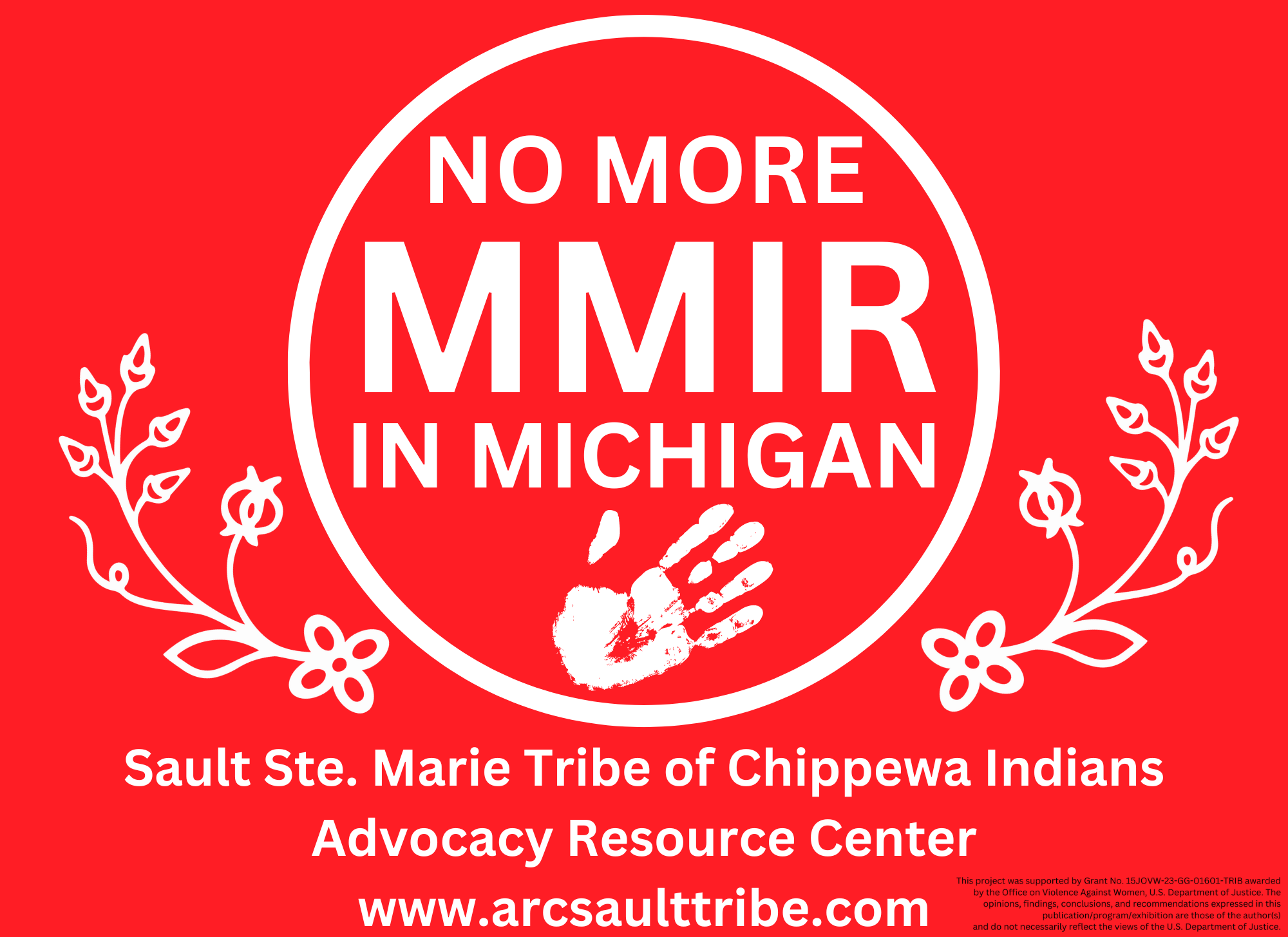
Toolkits are available at the Advocacy Resource Center and can be obtained by contacting the ARC office at 906-632-1808. For more information or ways to honor missing and murdered relatives, visit the ARC's Facebook page at www.facebook.com/saulttribeARC
